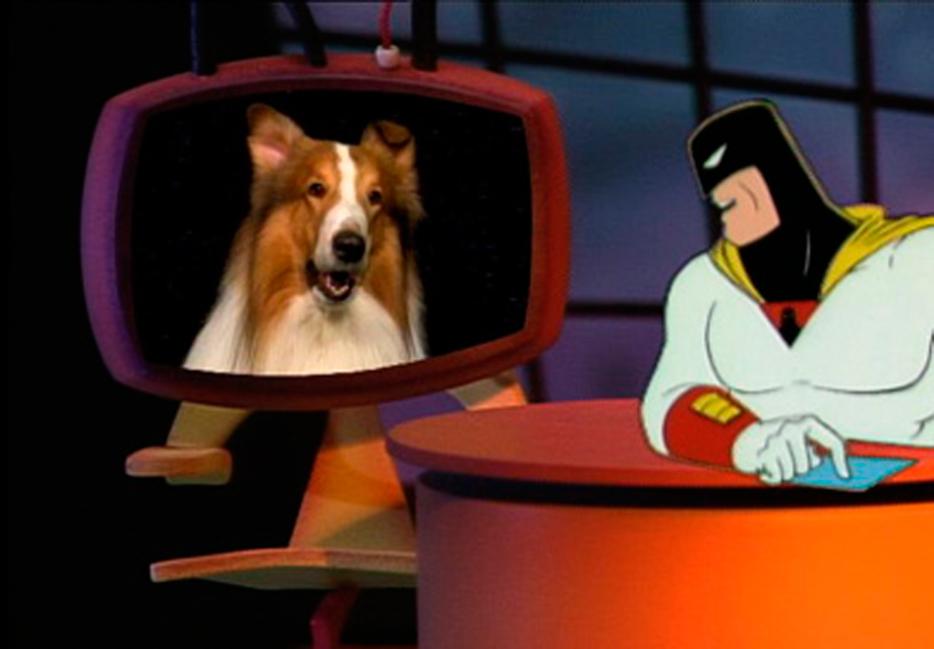Though they have a stable of classic cartoons, the big characters of Hanna-Barbera give a sheen to a studio whose real genius was for cranking out shows with industrial efficiency. There’s really no arguing with early hits like The Flintstones and Yogi Bear and later Scooby-Doo—though even their legacy seems to be ebbing with the waves of Boomer-era nostalgia—but the vast majority of the company’s output was Saturday morning cartoons that mixed a handful of kid-pandering tropes (a baritone hero, a couple kid helpers, some kind of wacky, possibly talking animal sidekick) with animation that was clean, simple, and cheap. The average Saturday cartoon was produced for something like $3,000 an episode, which even in the ‘60s and ‘70s was basically fairy dust for an animated show.
If Hanna-Barbera turned budget limitations into assembly-line efficiency, though, there are others who use such restrictions to get creative. Not long after Turner Broadcasting launched its Cartoon Network channel in 1992, it gave its first programmer, Mike Lazzo, an order to produce something, anything, for an adult audience—the only caveat was that it had to be dirt cheap, since no one had any idea if a network devoted solely to cartoons could survive on anything other than an array of reruns. Luckily, to help facilitate all those reruns, Turner had acquired Hanna-Barbera and its entire back catalogue.
Inspired by the Late Night wars to replace Johnny Carson, Lazzo chopped together a Denzel Washington press junket interview—the Turner company had a big stable of those, too—with one of Hanna-Barbera’s roster of Saturday superheroes. Whether impressed with its creativity or just its cost, the higher-ups approved, and on April 15, 1994, Space Ghost Coast to Coast became Cartoon Network’s first foray into adult animation, such as it was.
True to its roots, the show was almost absurdly simple. By rotoscoping the original animations onto a new, studio background, Space Ghost—in his original incarnation, an interstellar superhero who could turn invisible, fly, and blast energy rays from his wrists—became a clueless, fabulously self-important talk show host, assisted by former adversaries Zorak (a giant praying mantis/bandleader) and Moltar (a lava man in a metal suit/director). The internal logic of the show was that Ghost, having tired of the superhero game, was filling his retirement hours behind a desk, and his imprisoned enemies were forced to help him out. That would be one of the last times logic ever came into play on the show.
In an interview with The New York Times not long after its debut, Lazzo said SGC2C “falls under the category of post-modern comedy, almost. We’re making fun of making fun of things, basically.” I have no idea why he included the almost. Though early episodes were a slightly more straightforward satire of the talk show format, sort of an absurd Larry Sanders, things very quickly evolved into a much purer absurdity (even that NYT piece describes the show as “Dadaist”).
Though the celebrity interviews were conducted reasonably straight—sometimes they seem vaguely aware of what might be happening, but confusion is usually funnier than when they play along—they were cut up afterwards into ridiculousness, with Space Ghost either asking non-sequitur questions, getting angry, or playing out some entirely imagined storyline in his head, frequently all at the same time. As the show went on, they’d often entirely forget about the guests, such as when Space Ghost welcomed The Beatles (actually Pavement, a musical mirror for the show’s tone) or ignored Conan O’Brien to follow an ant for 10 minutes straight:





